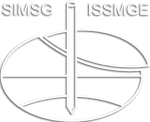Theoretical assessment of the advective-diffusive transport of contaminants through landfill composite liners
Theoretical assessment of the advective-diffusive transport of contaminants through landfill composite liners
Composite liners consisting of a geomembrane, placed over a low-permeability clay layer, are used throughout the world for the lining of waste disposal facilities, with the aim to prevent the groundwater quality from being compromised, and an unacceptable risk for the human health and the environment from occurring. Despite the importance of developing a rational approach to calculate the contaminant transport rate through composite liners, for both the design of new landfills and the risk assessment of the existing ones, limited attention has been paid so far to the derivation of analytical, numerical, or hybrid analytical-numerical solutions, which can help designers assess the containment performance of lining systems. After an overview of the simplified calculation approaches that are currently adopted for the performance-based design of composite liners, a novel theoretical framework is presented in this paper, which allows the advective-diffusive transport of inorganic contaminants to be modelled considering imperfect contact conditions between the geomembrane and the underlying clay layer.
Nicolo Guarena; Andrea Dominijanni; Mario Manassero
18th European Conference on Soil Mechanics and Geotechnical Engineering (ECSMGE2024)
E - Environment, water and energy
